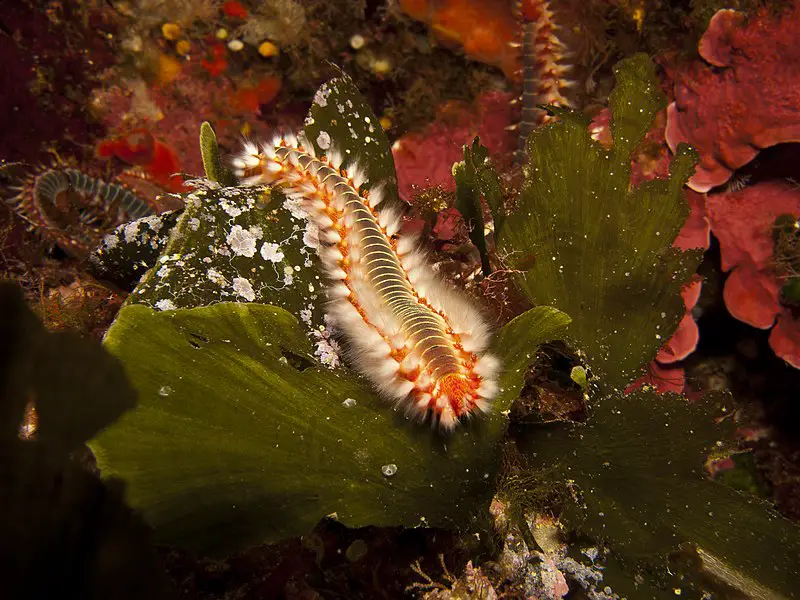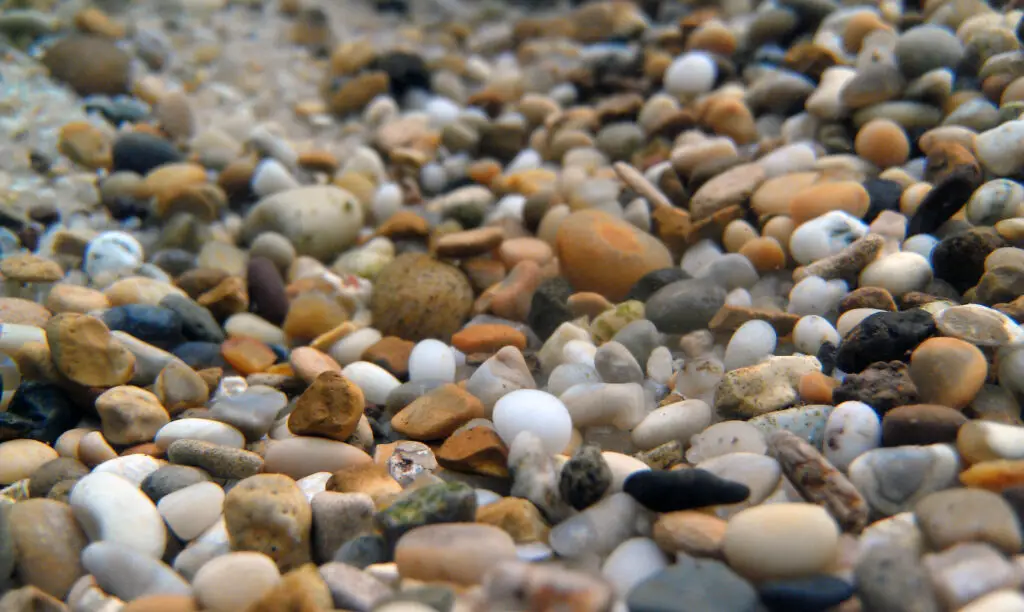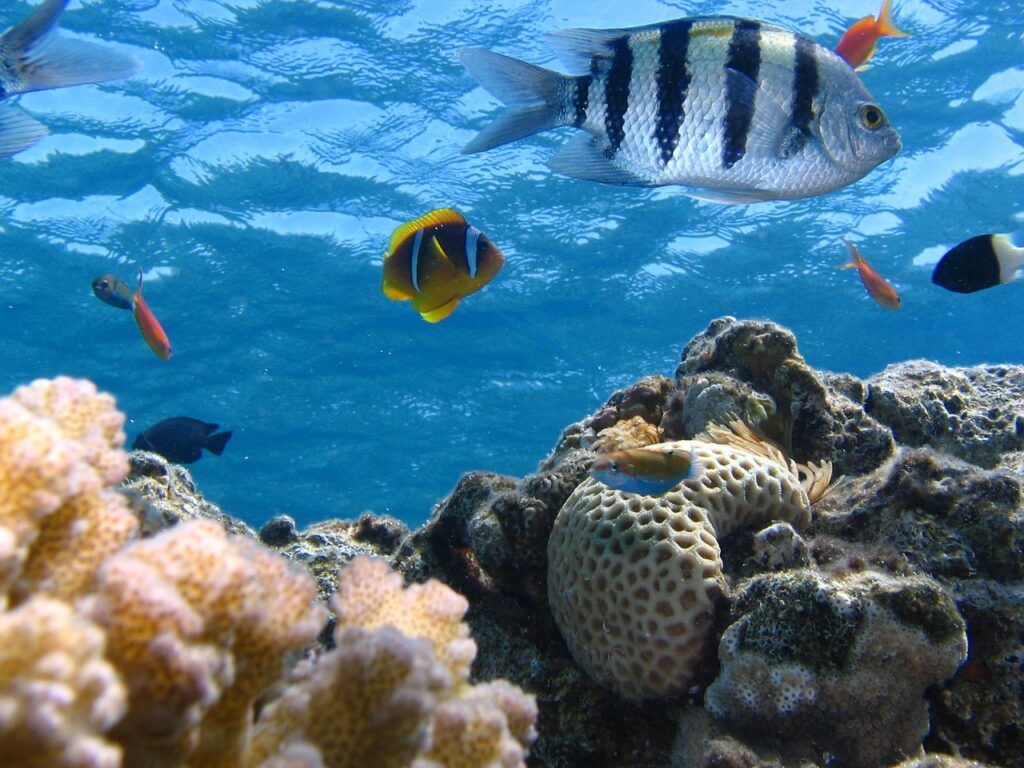Depending on the species of bristle worm in your aquarium, they can be beneficial or detrimental to your aquarium. There are more than 10,000 different species of aquatic worm. Some species of bristle worms can be beneficial to your aquarium, but others – like the notorious fireworms – can cause great harm to your aquatic community. The key is identifying which species you have in your tank.
The rest of this article will tell you all you need to know about bristle worms, including how to identify them and rid them from your tank.
What are Bristle Worms?
Bristle worms, as their name suggests, are bristly, segmented aquatic worms. They are nocturnal and spend most of their lives under the rocks or the substrate. They can grow up to 24 inches long, with some species in the wild reportedly growing much larger, but most bristle worms only grow between 1 – 6 inches in length.
Most people who have bristle worms in their tank never know it. Since bristle worms are so good at hiding, the only way to find them is to actively search for them at night with a flashlight.
There are many different species of bristle worms and depending on which kind you have in your aquarium, they may or may not be beneficial to your tank. If the ones in your tank are detrimental, they can overrun your tank and harm your plants and fish. Some are also carnivorous, and they will prey on your fish if the infestation is left unchecked.
The tufted bristles on bristle worms can cause a severe itch if handled. If you discover bristle worms in your aquarium, never handle them with bare hands.
What Kind of Bristle Worms are in my Aquarium?
Most species of bristle worms are actually beneficial to your aquarium. As unattractive as they are, they play an important role consuming detritus and uneaten food, which would otherwise decompose and emit ammonia which would negatively impact your water quality.
These beneficial bristle worms are scavengers and won’t attack healthy fish. However, there are some dangerous species that are poisonous to both humans and fish and will harm your fish and overrun your aquarium if not eradicated from the tank.
Fireworms are the most common harmful species of bristle worm. They are native to temperate and subtropical waters and are one of the few bristle worm species capable of bioluminescence. Their bristles sting humans, fish, mollusks, coral, and other aquatic species.
As their name suggests, fireworms have a bright red coloration and their tufts are thicker and fuller than most other common bristle worm varieties. They also emit bioluminescence while the common bristle worm and the bobbit worm, two of the most common species found in saltwater aquariums, do not. Fireworms also emit a sticky mucus-like substance when distressed, which is toxic.
How do I Get Rid of Bristle Worms?
There are three main ways you can get rid of your fireworm infestation:
- Physically remove fireworms from the tank – don’t use your bare hands
- Get a gravel vacuum, tweezers, or a turkey baster to suck the worms out of the tank. Since they hide in live rock crevices, transfer the rocks to a bowl full of saltwater stir the water. The worms will float to the surface.
- Use a bristle worm trap – you can find them at pet stores or you can make them yourself
- If making a DIY bristle worm trap, you’ll need a 12 – 20 oz plastic soda bottle.
- Cut off top of bottle
- Unscrew cap so top of bottle is open
- Invert top into the body of the bottle
- Superglue or duct tape the sides together, so worms don’t escape
- Place bait into the trap – this can be frozen food left to thaw during the day, or old, half-rotten food
- Worms will crawl inside and get stuck
- Introduce a fireworm predator to your tank
- There are a number of fish species that prey on fireworms and will eradicate them from your aquarium, including various wrasse species
How Long do Bristle Worms Live?
Bristle worms can live for years, and their lifespan is directly related to their food source. Their population will boom if there is enough food.
In ideal environments, fireworms have a lifespan of between 2 – 3 years.
Will Bristle Worms Hurt my Fish?
Most common bristle worms are beneficial to aquariums. They act as natural cleaners and eliminate detritus, carrion, and uneaten food from your tank. They are scavengers and don’t actively prey on live, healthy fish or other aquarium species.
There have been instances of aquarium owners noticing bristle worms feasting on fish carcasses, but it is more likely that the fish was sickly and died before the bristle worms began eating it.
Fireworms, on the other hand, are carnivorous and will actively attack healthy fish, mollusks, shrimp, and other aquarium species. They attract prey with their bioluminescence and then kill them with their sharp, poisonous bristles.
If you have clams, all bristle worm species are dangerous, since their bristles will irritate clams and prevent them from opening.
What Fish Eats Bristle Worms?
The following species of fish are natural predators of fireworms and will hunt the invasive species if you add them to your tank:
- Dottyback
- Halichoeres Wrasses
- Maori Wrasse
- Bird Wrasse
- Sunset Wrasse
- Coral Banded Shrimp
- Arrow Crab
Keep in mind that all of these species aren’t reef safe and can become aggressive with your other aquarium species. Remember to consider the long-term plans for these species after the fireworm infestation is taken care of. You will need to supplement their diets or rehome them.
How do I Prevent Bristle Worms in my Aquarium?
Since bristle worms’ main access to your aquarium is through coral or live rocks, it is best to quarantine any new additions of coral and live rocks before introducing them to your main tank.
Experts recommend a quarantine period of about 3 months, with your live rock or coral in a separate tank, before adding it to your main tank.



